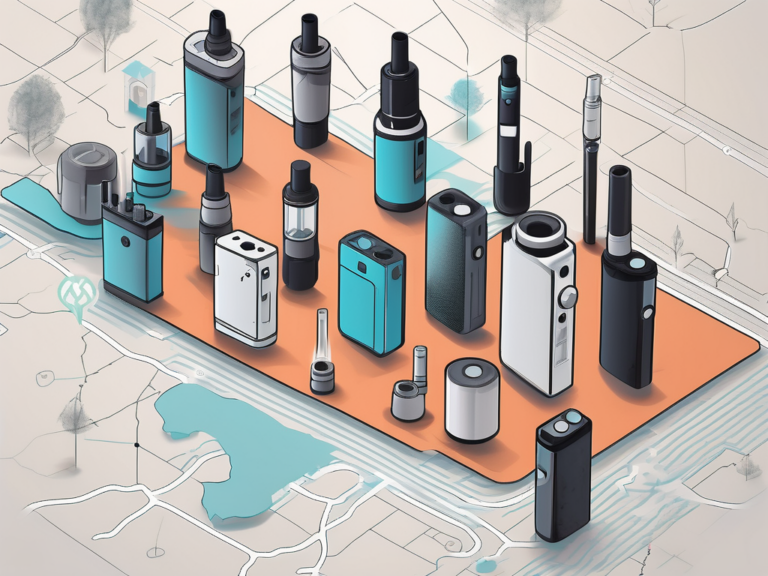how can you tell if someone vapes
Vaping has gained tremendous popularity in recent years, becoming a common sight in social gatherings, streets, and even homes. As an experienced observer, you may wonder: how can you tell if someone vapes? In this article, we will explore the various aspects of vaping that may help you recognize its presence.
Understanding Vaping and Its Popularity
The Basics of Vaping
Vaping involves the use of electronic devices, known as vaping devices or e-cigarettes, that heat a flavored liquid, known as vape juice or e-liquid, to produce an aerosol that is inhaled. This process is similar to smoking but does not involve the combustion of tobacco or the production of smoke. Instead, the user inhales and exhales vapor.
Vaping devices consist of a battery, a heating element, and a tank or cartridge to hold the vape juice. The battery powers the device and heats the heating element, which then vaporizes the vape juice. The user inhales the vapor through a mouthpiece, experiencing the flavor and nicotine hit.
Some vaping devices, particularly advanced mods, allow users to customize their vaping experience by adjusting factors such as wattage, voltage, and airflow. This customization can cater to individual preferences, providing a more tailored vaping experience.
Why People Choose to Vape
Vaping has become popular for various reasons. One of the primary motivations is the perceived reduced harm compared to traditional smoking. Vaping eliminates many of the harmful chemicals and toxins associated with combustion, making it a potentially less harmful alternative for adult smokers looking to quit or reduce their tobacco use.
Additionally, vaping offers a wide range of flavors, allowing individuals to explore different tastes and avoid the unpleasant smell associated with tobacco smoke. Some users also find vaping to be a social activity, enjoying the communal aspect of sharing flavors and experiences with others.
Furthermore, the convenience of vaping cannot be overlooked. Vaping devices are portable and easy to use, making them accessible for users on the go. The ability to quickly satisfy nicotine cravings without the need for a lighter or ashtray adds to the appeal of vaping for many individuals.
Recognizing the Signs of Vaping
Physical Indicators of Vaping
While individuals who vape may not exhibit clear physical indicators like traditional smokers with the smell of smoke on their clothes, there are still signs that can help you identify vapers. Repeatedly bringing a hand to the mouth as if smoking, discreetly puffing out vapor, or flicking their fingers as if flicking away an invisible cigarette are common physical gestures associated with vaping.
However, it’s vital to note that these gestures may be contextual or unrelated to vaping. Always approach the subject with respect and avoid making assumptions or judgments based solely on physical observations.
Another interesting physical indicator of vaping is the presence of vape clouds in the air. Vapers often exhale dense clouds of vapor that can linger in the environment, especially in enclosed spaces. These vapor clouds can have different scents depending on the flavor of the vape juice used, ranging from fruity to dessert-like aromas.
Moreover, individuals who vape may have subtle changes in their appearance due to the effects of vaping on the skin. Some vapers may experience dryness or irritation around the mouth area from frequent contact with the vape device. Additionally, prolonged vaping can sometimes lead to a slight discoloration of the fingertips from handling the device regularly.
Behavioral Changes Associated with Vaping
Another way to detect vaping is to observe changes in behavior. Vaping often requires regular maintenance, such as refilling the vape juice or charging the device. This may prompt individuals to carry small bottles of vape juice or additional batteries. Moreover, vaping devices emit a faint noise when used, which can be detectable in quiet surroundings.
Behavioral changes may also include spending more time outdoors or in designated vaping areas, as vaping etiquette often discourages indoor use in public spaces. Additionally, individuals may exhibit increased interest in vaping-related topics, such as attending events or following online communities dedicated to vaping.
Furthermore, individuals who vape may develop a preference for certain vaping styles or techniques, such as cloud chasing or flavor chasing. Cloud chasing involves producing large vapor clouds for visual effect, while flavor chasing focuses on experiencing the full range of flavors in different vape juices. These preferences can influence the choice of vaping devices and accessories, reflecting a vaper’s unique vaping identity.
Common Vaping Devices and How They Work
Different Types of Vaping Devices
Vaping devices come in various shapes, sizes, and styles, catering to a diverse range of preferences among users. The evolution of vaping technology has led to a wide array of options available in the market today. Some devices are designed to closely resemble traditional cigarettes, known as cig-a-likes, providing a familiar feel for those transitioning from smoking. On the other end of the spectrum, advanced users often prefer more customizable options.
Among the common types of vaping devices are vape pens, which are slender and pen-like, making them easy to carry and use discreetly in various settings. Pod systems have gained popularity for their simplicity and convenience, utilizing disposable or refillable pods that contain the e-liquid. These devices are often more compact and portable, making them ideal for users on the go. For those seeking more power and customization, box mods offer a wide range of features, including adjustable settings and compatibility with different tanks and coils.
The Mechanics of Vaping Devices
Understanding the mechanics of vaping devices is essential for users to maximize their experience and safety. At the core of every vaping device is a battery that powers the heating element responsible for vaporizing the e-liquid. This vapor is then inhaled by the user through the mouthpiece, creating the sensation of smoking without the harmful effects of combustion.
Many modern vaping devices come equipped with adjustable settings that allow users to fine-tune their experience. From controlling the temperature of the heating element to adjusting the airflow, these settings enable users to customize the intensity and flavor of their vapor. Moreover, safety features such as automatic shut-off mechanisms and short circuit protection provide users with peace of mind during their vaping sessions, ensuring a secure and enjoyable experience.
The Smell of Vape: Identifying Different Scents
Common Vape Juice Flavors
Vape juice is available in a plethora of flavors, ranging from fruity to dessert-inspired options. Some popular choices include mint, strawberry, tobacco, and vanilla. Each flavor can contribute to a distinct smell when vaped, and experienced individuals may be able to identify the flavor based on the scent alone.
Exploring the world of vape juice flavors reveals a vast array of options beyond the traditional choices. From exotic fruits like dragon fruit and lychee to decadent treats like caramel macchiato and birthday cake, the variety is truly endless. Vapers can customize their experience by mixing different flavors to create unique blends that suit their preferences.
How Vape Smells Differ from Traditional Smoke
It is important to note that vape smells are typically milder and dissipate more quickly compared to traditional cigarette smoke. The scent of vape may resemble the chosen flavor and can often be mistaken for air fresheners or scented candles.
However, it is crucial not to generalize or jump to conclusions solely based on smell. Other factors, such as the absence of physical indicators or changes in behavior, should be considered when identifying if someone vapes.
Moreover, the technology behind vaping devices continues to evolve, leading to advancements in reducing lingering odors. Modern devices are designed to produce less residual smell, making them more discreet for users who prefer not to broadcast their vaping habits. This innovation has contributed to a shift in the perception of vaping, with an emphasis on convenience and customization.
Health Implications of Vaping
Short-term Health Effects of Vaping
While vaping is generally considered less harmful than traditional smoking, it is not without potential health implications. Short-term effects may include throat and mouth irritation, coughing, and increased heart rate. Some individuals may also experience dizziness or headache, particularly when using higher nicotine concentrations.
Additionally, it is important to note that vaping can have an impact on oral health. The aerosol produced by e-cigarettes can contribute to dry mouth, which can lead to an increased risk of tooth decay and gum disease. This is because saliva plays a crucial role in neutralizing acids and washing away food particles that can cause cavities. Therefore, individuals who vape should be mindful of their oral hygiene practices and consider using products specifically designed to combat dry mouth.
It is essential to remember that research into the long-term health effects of vaping is ongoing, and definitive conclusions have not been reached. Nevertheless, it is always recommended to seek professional advice and make informed decisions regarding personal health choices.
Long-term Health Risks of Vaping
The long-term health risks associated with vaping are still being studied. Concerns exist regarding the potential impact on respiratory and cardiovascular systems, as well as the potential development of nicotine dependence. However, rigorous scientific research is necessary to establish conclusive evidence.
Furthermore, there is increasing interest in understanding the potential effects of vaping on lung health. Preliminary studies suggest that certain chemicals present in e-cigarette aerosol may have detrimental effects on lung tissue, potentially leading to chronic lung diseases such as bronchitis or even irreversible lung damage. However, more research is needed to fully understand the long-term consequences of vaping on respiratory health.
Always consult reputable sources and medical professionals for accurate and up-to-date information regarding the potential risks and benefits of vaping.
In conclusion, recognizing if someone vapes requires a combination of observation, understanding of vaping devices, and awareness of associated indicators. By considering physical gestures, behavioral changes, and the distinct smell of vape, one may gain insights into whether an individual engages in vaping. However, it is essential to approach the subject without judgment and respect personal choices and privacy. Stay informed about the potential health implications of vaping by referring to reputable sources and consulting medical professionals when necessary.






